#open source testing
Explore tagged Tumblr posts
Text
Best Practices for Designing a Test Automation Framework
Designing a robust test automation framework is essential for scalable, maintainable, and efficient testing. A well-structured framework helps teams standardize test processes, accelerate execution, and improve code reusability. Here are key best practices to follow:
Define a Clear Architecture
Choose a layered structure that separates test scripts, utilities, and test data. This modularity improves maintainability and enables easy updates.
Select the Right Tools and Tech Stack
Choose tools that align with your application, team skillsets, and CI/CD goals—like Selenium, TestNG, Cypress, or Playwright. Integrate with version control and build tools for automation framework continuity.
Use Data-Driven and Keyword-Driven Approaches
Implement reusable test logic that supports parameterization. This reduces redundancy and allows flexibility in running tests with various datasets.
Enable Logging, Reporting, and Exception Handling
Build in detailed logs and custom reports for quick debugging. Include robust error handling to prevent script failures from breaking the entire suite.
Ensure Scalability and Maintainability
Design the framework to scale with your application. Follow coding standards, comment code clearly, and regularly refactor for performance.
A well-designed framework is the foundation for long-term test automation success.
#AI test automation#tcoe testing#test management tools#qa test management tools#automation tools for testing#performance testing tools#open source testing#web automation using robot framework#test automation strategy#testing coe framework
0 notes
Text
open to: w/nb plot: two 'best friends' who hook up after parties or makeout when they're bored and shit talk old boyfriends together and it's fun and light and cool!!!!!!!!!!! until it's not <3

it wasn't exactly fair of them to try and hold a conversation with her when mai's mind was elsewhere, but still she hummed out sounds of approval and understanding as sloppy kisses were trailed over the side of their neck. it was routine, almost, for them to wind up in one another's arms when they were alone together and while they'd always maintained that it was just the nature of their friendship, lately mai had been feeling a touch more possessive of her friend. which was why the name of a third party immediately caught her attention, causing her to sit up straighter with dark brows drawn in together. "wait, i'm sorry— did you just say ethan asked you out? and you said yes?? why??"
#plot inspo in source <333#lesbians falling in love with their best friends is just sooo relatable it'll never get old#( int/ mai akecheta. )#( testing. )#( open. )#indie rp#indie open rp#indie smut rp#indie lesbian rp
8 notes
·
View notes
Text
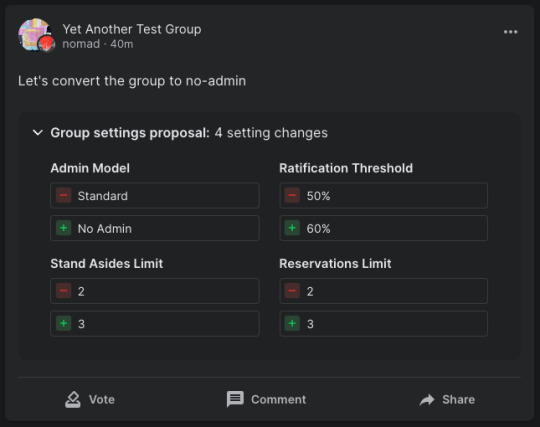
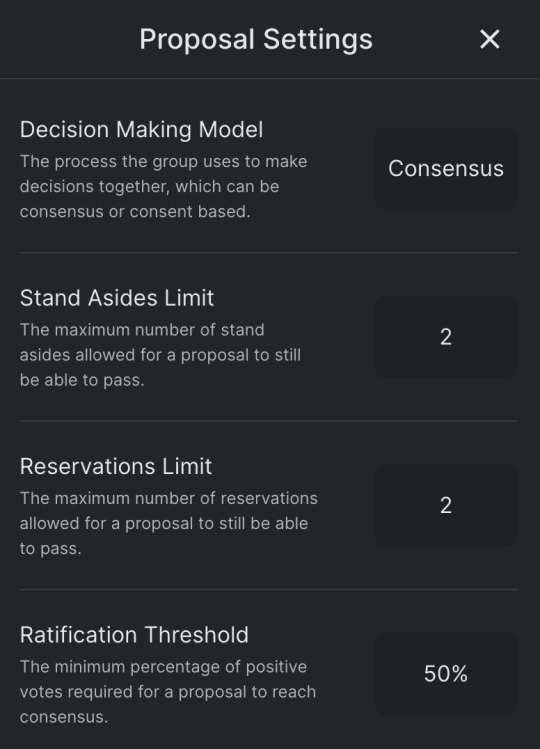
Since our last release, we've introduced several significant updates, with one of the key enhancements being proposals to change group settings. This enables group members to collectively shape the group's overall functionality and tailor it to better suit their needs and preferences as the group evolves over time.
In addition to the ability to propose changes, we've introduced the following group settings:
Decision Making Model - You can now choose from consensus or consent decision-making to determine how decisions are made in the group
Admin Model - Choose from No Admin or Standard to determine how the group is managed. No Admin ensures all changes are made through proposals, while Standard allows for customizable admin roles
Ratification Threshold - Set the minimum amount of positive votes required for a proposal to be ratified under consensus
Voting Time Limit - Set a time limit for how long proposals can be voted on before they're closed or ratified. This can be set with a dropdown or a date picker
Stand Asides and Reservations Limit - Set the acceptable number of stand asides or reservations for a proposal to pass
These updates aim to offer greater customization for groups, while also showcasing how software can empower communities to collectively shape the digital spaces they occupy.
For anyone interested in helping to test the new features, feel free to hit us up on here or Discord.
Join the Praxis Discord - Mastodon - GitHub
#open source#praxis#free software#typescript#nodejs#foss#reactjs#design#graphql#software testing#software#software engineering
49 notes
·
View notes
Text
Tux Paint 0.9.32 (& friends) is now available for beta testing. Currently built for Windows, macOS, and RHEL Linux.
#tuxpaint#open source#software development#edtech#digital art#beta testing#free software#software libre
22 notes
·
View notes
Text
I have spent the last ten hours repeatedly reinstalling Windows to track down a single registry change that was causing an embroidery program to not launch. AtlasOS is great but it really is annoying that there's not really a way to revert its changes easily
#not even exaggerating#started soon after I got to work#so probably 9AM#it was mostly downtime but still#install Atlas - test software - if good enable more modules - if bad disable more modules - reinstall base windows - repeat#luckily Atlas is open source and has a discord to ask people about it#but still very annoying#it works now though!
3 notes
·
View notes
Text
XKit Rewritten
My Tumblr browsing experience just got 100% better since I installed this browser extension. I've said "goodbye" to the Tumblr Live carousel! And Tumbr Radar! And several other annoying features of the web interface.
Please note that the XKit-Rewritten extension is in beta. I'm testing it on Firefox. Your mileage may vary.
12 notes
·
View notes
Text
People thinking they can poke holes in the quality of the media I hyperfixate on puzzle me. Dude, I know it's trash. I know it's mediocre-to-actively bad. I know it has the nutritional value of Fruit Loops. That's why I hyperfixate on it. If it was actually good it wouldn't produce the kind of under-the-skin irritation only scratchable by 738274 fics, fanedits and meta. I'm not gonna apologize for it.
Of course people who hyperfixate on this trash thinking it's good is a whole other class of animal. That probably belongs in a zoo.
#insert CW show here#I wonder what it would be like to be in a fandom whose source material is actually good#like LotR or Alexis Hall or Discworld or Leverage#although I've blocked some of those tags because their fandom's avoidance of discussing their problems at all#the blind worship of their creators and general superiority about the ''goodness'' of their source material#is a lot more insidiously toxic than having to share space with J2 truthers#fandoms of trash media are a lot more open to criticism of our source material and creators#exception being RWRB fandom#but that's down to it being somehow annexed entirely by Swifties#they're the class of animal I'm talking about#supernatural#DCU#harry potter#DCtv#flarrowverse#BtVS#DC comics#should put Bones in here but the show was testing my cringe resistance even before I quit by S6#imbibing copaganda is one thing but completely disgracing the field of anthropology is where I draw the line#same with Queer as Folk#like enjoyable for its time but I can't sit through it at all now#sometimes I do want to apologize for my hyperfixations#knee of huss
16 notes
·
View notes
Text
How to Streamline Your QA Process with the Right Tools
A streamlined QA process is essential for delivering high-quality software at speed. The Automation testing tools can eliminate bottlenecks, reduce manual effort, and improve overall test accuracy. Start by assessing your project’s needs—whether it’s web, mobile, or API testing—then choose tools that align with those requirements.
For UI automation, tools like Selenium, Cypress, and Playwright offer flexibility and robust community support. Test management tools such as TestRail or Zephyr help organize test cases, track execution, and report results effectively. If your team works in an agile or DevOps environment, integrating tools with CI/CD platforms like Jenkins or GitHub Actions can accelerate test cycles and feedback loops.
To reduce test creation time, consider low-code or codeless automation tools such as Tenjin Online, which empower non-technical testers. Additionally, performance testing tools like JMeter and k6 help ensure scalability under load.
Finally, ensure real-time collaboration and visibility by integrating QA tools with project management platforms like Jira or Asana. When your QA stack is tailored to your workflow, you’ll see faster releases, fewer bugs, and better alignment between QA and development teams.
#software testing#qa services#qa testing services#performance testing tools#qa test management tools#automated system testing#manual testing tools#open source testing
0 notes
Text
open to: w/nb plot: just an innocent lil church mouse nervous about her lack of experience after getting asked out on her first real date (w/ a man.... SIGH) and who better to help make sure she's up to speed than her bestie!!! in the most platonic of ways : )))

"it's no USE!" the shrill cry of frustration was only half as dramatic as the way leah threw herself down onto the lavish mattress in the middle of her room. "i never even kissed anyone before! he'll take one look at me and know i'm some virgin freak...." frankly, the thought of cancelling her date wasn't what had her so concerned. it was the fact that she knew word would spread quickly and, while the sheltered little angel act was a part of her public image, she dreaded thinking that the world might know it wasn't purely an act meant to draw people to her father's church. "i should just call him and cancel, shouldn't i?"
#plot inspo in source xoxo#she's literally the only pure one in her televangelist family and she's looking to change that okay !!!!!#she's feeling left out of the debauchery#( int/ leah walker. )#( testing. )#( open. )#indie rp#indie open rp#indie smut rp#indie lesbian rp
5 notes
·
View notes
Text
Testing and QA is now open for all verified members of the Praxis Discord server!
If you're interested in helping to test the website and would like to be the first to know about the latest features, join us on Discord and we can get you set up with an account in our new testing environment.
As we're still in the very early stages of testing and QA, please bear in mind that Praxis is not yet intended for serious use outside of testing or research purposes.
Invite link to the Praxis Discord
#open source#praxis#free software#foss#software testing#quality assurance#qa testing#collaborative software
38 notes
·
View notes
Text
Tux Paint 0.9.35-rc1 beta for macOS too!
Get it here: https://tuxpaint.org/beta/
Try it out & let us know if you find any issues.
4 notes
·
View notes
Text











Glee TV Lea Michele Rachel Berry 11 Rare Unpublished Wardrobe Photos 507,516,519
5 notes
·
View notes
Text
Another lighting test

#oooOooo spoooky ooOoo#but in all honest I just recently finished this one because there was a day ago I feel shit#family problems and shit#and just so happens I opened this one and finished it#I could say this was a vent but this was supposed to be a lighting test and wanted to try the spooky vibes#i dunno whoever see this may be the judge#//#sfm#source filmmaker#sfm poster#source filmmaker poster#my sfm#oc#original character#sona#oc sona#my art#my artwork#lighting test#test#Lee
3 notes
·
View notes
Text
and here's an example of exactly how much this means to me -- I've been really feeling like I'm terrible at photographing my own work, especially watercolour, and i can't seem to really capture what makes a painting special in person.
here's some examples of my attempts to photograph this sketchbook painting using the native camera app on my phone:






it's grainy, blotchy, the colours feel off, the contrast is too much... it really doesn't capture what's on paper in front of me!
so then i try with the processing turned off in Open Camera:


it's fucking night and day!
A clearer comparison for you:

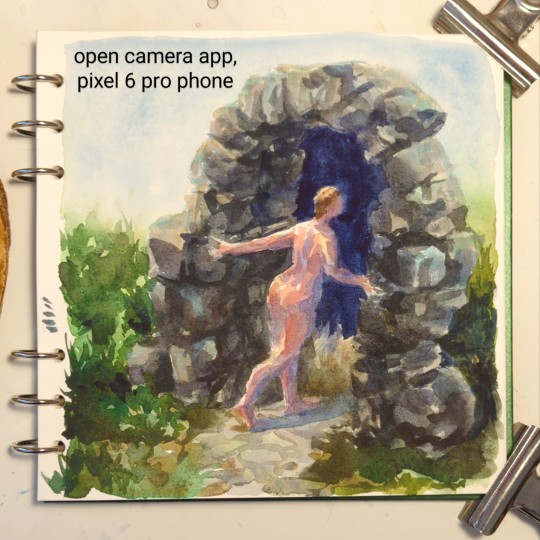
jesus fucking christ what a game changer!
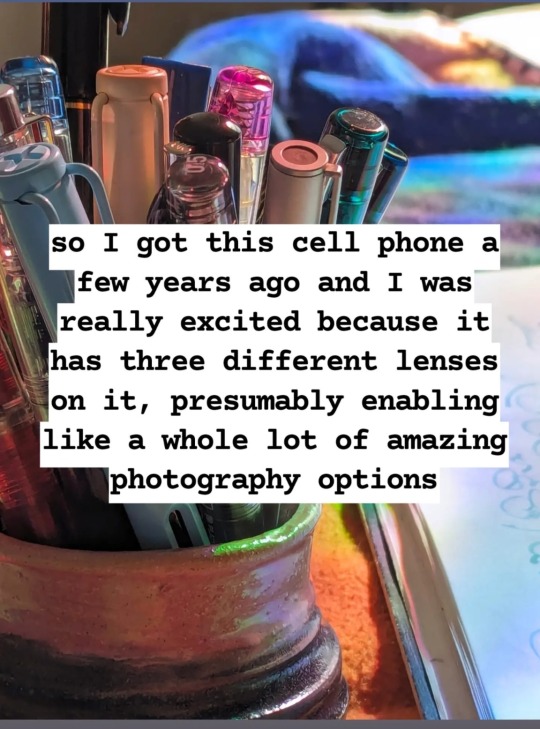
I am mad about cellphone cameras hiding the processing they do, and I am glad about software that lets me control it and opt in and out, and I dictated this rant on insta so I am resharing the images here and will attempt to turn this into a useful text post on my blog in future, when my hand is working better 🤘👍
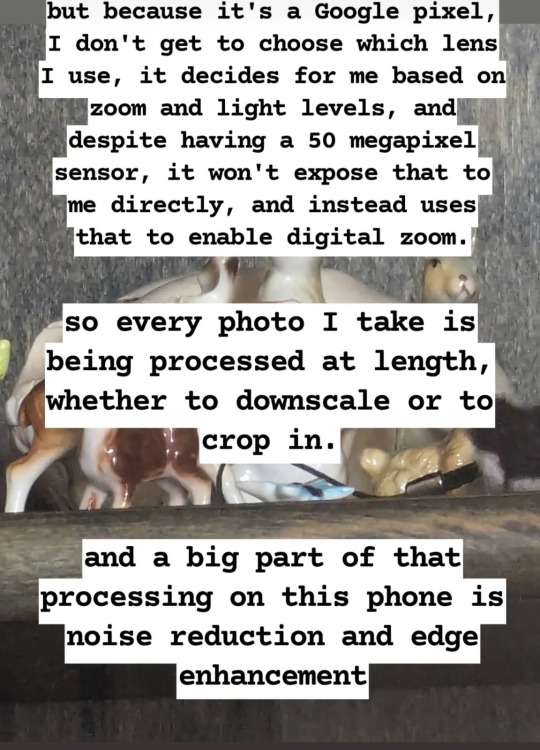





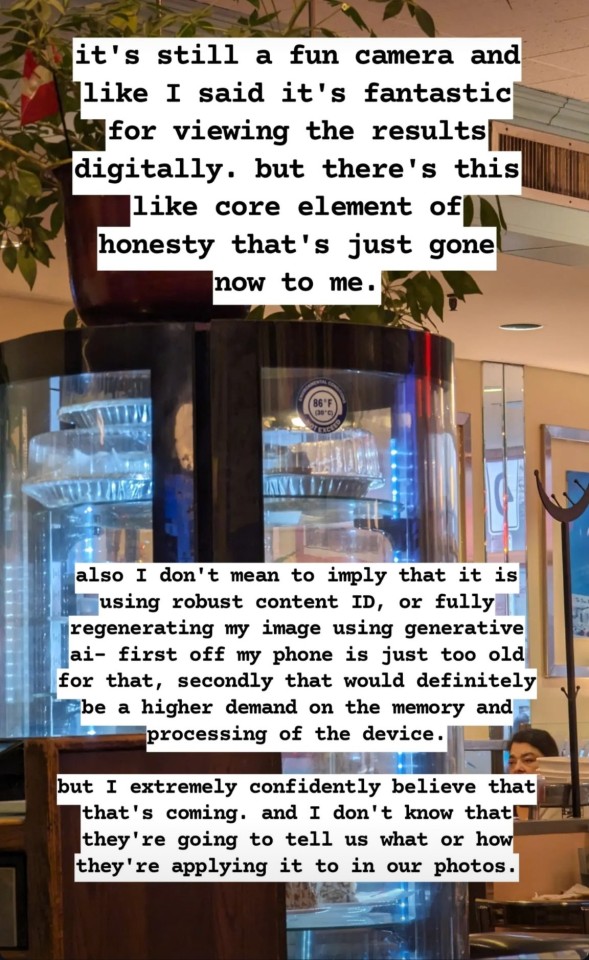

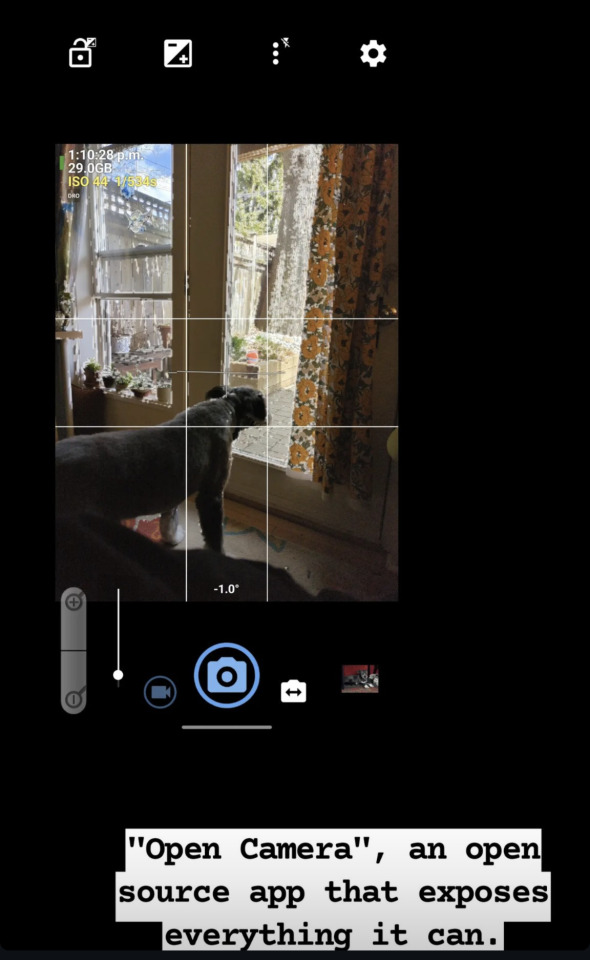

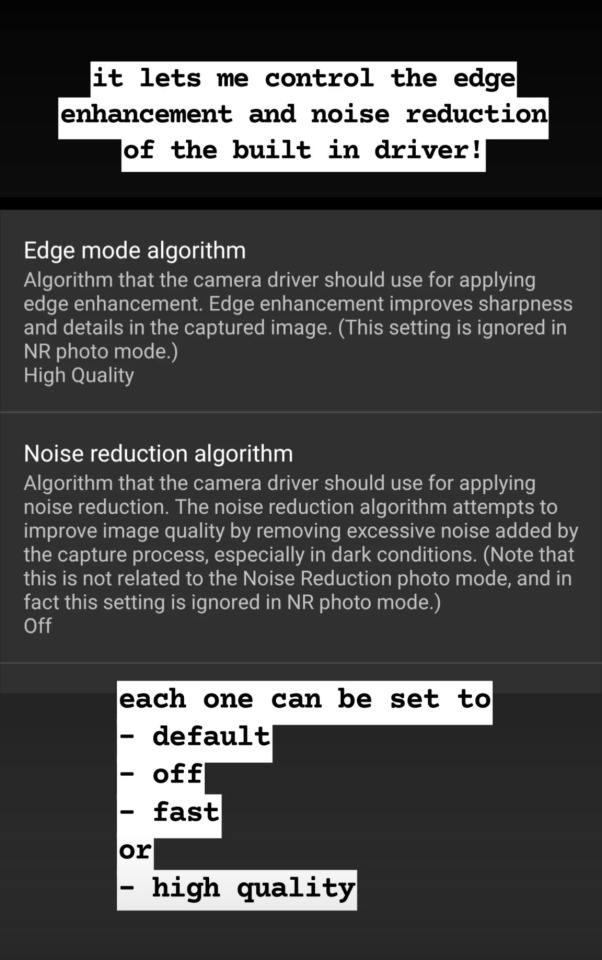






#photography#open camera#open source software#photographing watercolours#watercolour painting#sorry there's a butt#that's what's on the painting table today#so that's what i tested my camera with
29K notes
·
View notes
Text
Loving Travis
For most of my open-source software projects, I use the Actions platform built into GitHub for CI (continuous integration). GitHub Actions provides virtual machines to run workflows, so I don't have to administer build environments for Linux, MacOS, Windows, and so on. It's modern, convenient (if you use GitHub instead of, say, GitLab), fairly reliable, and (best of all) free (for public repos).
For me, the main limitation of Actions is that all their hosted runners use the x64 architecture. Sometimes I want to build and/or test on Arm CPUs---for instance my Libbulletjme project, which has a bunch of platform-sensitive C++ code.
For Libbulletjme, I still depend on the older TravisCI platform, run by a private firm in Berlin. In addition to a huge selection of build environments based on AMD CPUs, Travis also provides Arm-based Linux environments. (Officially, they're a "beta-stage" feature, but they've been in beta for years.) Like Actions, Travis is also free to open-source projects, though their notion of "open-source" seems a bit stricter than GitHub's.
I mention Travis because my experiments with the Vulkan API exposed a limitation in Libbulletjme, which led me to begin work on a new release of Libbulletjme, which led me to discover an issue with Travis's Arm-based build environments. A recent change to these environments caused all my Arm-based builds to fail. I could only go a bit further with Vulkan before I would have to make hard choices about how to work around the limitations of Libbulletjme v18.5.0 .
At 20:09 hours UTC yesterday (a Sunday), I e-mailed TravisCI customer support and explained my issue. At 12:25 hours UTC today, Travis announced a hotfix to solve my issue. That's pretty good turnaround, for a non-paying customer having issues with a "beta-stage" feature on a summer weekend.
Bottom line: I still love Travis. <3
#continuous integration#vulkan#computer architecture#software engineering#open source#github#hosting#upcoming releases#customer support#making progress#software testing#war stories#love#berlin
3 notes
·
View notes
Text
TypeScript Interface: Complete Guide for Modern Developers

TypeScript interface definitions are critical in maintaining type safety when a JavaScript application is being created. They enable developers to define object structures and help ensure consistent development in a project. Understanding, using, and maintaining interfaces in TypeScript is important in proving to be beneficial to development regardless of project size - whether it is an enterprise application or a small JS app - giving you an experience and quality of code that will be superb.
Many issues associated with type safety and predictability exist in the world of modern Javascript development. TypeScript confronts those issues directly with a system of strong types and interfaces act as our contracts for objects, classes, and functions.
For a deeper dive into improving test coverage in JavaScript and TypeScript using NYC, check out this comprehensive guide on mastering NYC.
What is a TypeScript Interface?
An interface in TypeScript is a template for the shape of an object - you can think of an interface as a contract that specifies what properties an object will have and the type of those properties. Interfaces do not generate any JavaScript code during compilation; interfaces only exist for type checking purposes during development time.CopyCopyinterface User { id: number; name: string; email: string; isActive: boolean; }
This simple interface simply specifies that any object implementing the User interface must have these four properties, and that they are of the specified types. The great thing about interfaces is that they allow us to catch type-checking errors at compile time and not at runtime.
Core Interface Features and Syntax

Basic Property Definitions
When defining interfaces in TypeScript, you'll mostly use the Property Definitions. Each property can be required or optional, and TypeScript will allow you to specify any of these with clear syntax.CopyCopyinterface Product { id: number; name: string; price: number; description?: string; // Optional property category: string; }
The question mark (?) after the name of the property shows that the property is optional. This optionality means that an object can implement the interface without providing values for the optional properties.
Read only Properties
The TypeScript interface definition also supports read-only properties, in which case the property cannot be changed after its initial assignment. This feature is especially useful when implementing immutable data structures.CopyCopyinterface Configuration { readonly apiUrl: string; readonly version: number; timeout: number; }
After you define the property as readonly, any further attempts to modify that property will yield compilation errors anywhere in your application, thus preserving your data.
Index Signatures
There are times when you need interfaces that support dynamic property names. Index signatures give you that flexibility while still being type safe.CopyCopyinterface StringDictionary { [key: string]: string; } interface NumberDictionary { [index: number]: string; }
These patterns are useful when you are working with objects that have dynamic property names but consistency in the value they store.
Advanced Interface Patterns

Method Definitions
Interfaces are not only limited to defining properties, but can also define method signatures. This is really helpfully useful because it enables you to create a contract that classes must adhere to.CopyCopyinterface Calculator { add(a: number, b: number): number; subtract(a: number, b: number): number; multiply(a: number, b: number): number; }
Any class that implements this interface will have to provide implementations for all the required methods.
Function Type Interfaces
You can also define interfaces for function types, quite literally creating a reusable function signature throughout your application.CopyCopyinterface EventHandler { (event: string, data: any): void; } interface Validator { (input: string): boolean; }
These function interfaces provide consistency for callback patterns and event handling throughout your codebase.
Interface Inheritance and Extension
One of the best features of TypeScript interface is that interfaces support inheritance. They extend other interfaces, creating a hierarchy of inheritance relationships that can be reused and keeps code well organized.CopyCopyinterface Animal { name: string; age: number; } interface Dog extends Animal { breed: string; bark(): void; } interface Cat extends Animal { color: string; meow(): void; }
When you create this hierarchy of inheritance, you are able to build in a much more complex type definition but still keeping the relationship clear between difference types of entities.
Multiple Interface Inheritance
TypeScript allows for multiple inheritance through interfaces, so you can take behaviors from more than one source.CopyCopyinterface Flyable { fly(): void; altitude: number; } interface Swimmable { swim(): void; depth: number; } interface Duck extends Animal, Flyable, Swimmable { quack(): void; }
This is a powerful approach, because you can define complex behaviors from simpler, more focused interfaces!
Generic Interfaces
Generic interfaces allow you to create flexible types with type parameters, and they allow you to use your interfaces with different data types for reuse.CopyCopyinterface Repository<T> { find(id: number): T | null; save(entity: T): void; delete(id: number): boolean; findAll(): T[]; } interface ApiResponse<T> { data: T; status: number; message: string; }
When building a data access layer or an API response handler with parameterized entity types, generic interfaces are invaluable.
Interface vs Type Aliases
In TypeScript's design, interfaces and type aliases serve different purposes, and both have different capabilities. It is important to understand the capabilities of each so you can use either effectively in developing an application in TypeScript.

Interfaces in TypeScript are very good at defining the shape of an object and support inheritance patterns. They are good for defining contracts for classes to implement or describing the structure of data objects.
Type Aliases can use union types, intersection types, and primitive type aliases. Use type aliases to explore complex type manipulation patterns and functional programming patterns.CopyCopy// Interface approach interface User { id: number; name: string; } // Type alias approach type Status = "pending" | "approved" | "rejected"; type UserWithStatus = User & { status: Status };
Practical Implementation Examples
Building a Data Service Interface
If you are building a data service for a web application, having a clear interface will help maintain consistency between implementations of a data service.CopyCopyinterface DataService<T> { endpoint: string; headers: Record<string, string>; get(id: number): Promise<T>; create(data: Partial<T>): Promise<T>; update(id: number, data: Partial<T>): Promise<T>; delete(id: number): Promise<boolean>; list(params?: QueryParams): Promise<T[]>; } interface QueryParams { page?: number; limit?: number; sort?: string; filter?: Record<string, any>; }
The interface described above is providing an entire CRUD service contract that must be fulfilled by each implementation which makes sure that implementations between various data sources will be consistent.
Component Props Interface
When building React components using TypeScript, defining interfaces helps define the props contract clearly and makes for excellent IDE support.CopyCopyinterface ButtonProps { children: React.ReactNode; variant: "primary" | "secondary" | "danger"; size: "small" | "medium" | "large"; disabled?: boolean; onClick: (event: React.MouseEvent<HTMLButtonElement>) => void; }
This interface ensures that Button components are receiving the correct props and means that there is clear developer documentation.
Best Practices and Common Patterns

Naming Conventions
Having common or consistent naming, improves the readability and maintainability of the code. Many teams will prefix `I` in front of their interface names or will use a name that describes their interface so they will be clear with what it is for.CopyCopyinterface IUserService { // Service interface } interface UserCreateRequest { // Request payload interface } interface UserListResponse { // Response interface }
Interface Segregation
Protect yourself from the Interface Segregation Principle by building smaller and more focused interfaces (rather than big, bulky and monolithic interfaces).CopyCopy// Good: Focused interfaces interface Readable { read(): string; } interface Writable { write(data: string): void; } // Better than one large interface with all methods interface FileHandler extends Readable, Writable { filename: string; }
Optional vs Required Properties
Be thoughtful about when to declare properties as optional. While optional properties provide flexibility, required properties help to preserve data integrity.CopyCopyinterface CreateUserRequest { name: string; // Required email: string; // Required phone?: string; // Optional newsletter?: boolean; // Optional with default behavior }
Debugging and Troubleshooting
Common pitfalls when working with TypeScript interface can include issues with property mismatches, lack of implementations, and checking for type compatibility. The TypeScript compiler will provide stack traces that can help you debug errors in a concise manner.
When interfaces get big, it is important to break them down into smaller, more focused interfaces that can be combined together. This allows you to build and maintain interface definitions that are easy to troubleshoot.
Integration with Development Tools
Modern IDEs have excellent support for TypeScript interface, including auto-completion, type-checking, and refactoring. These tools improve the developer experience significantly, and help practitioners avoid common pitfalls.
Some popular tools such as Visual Studio Code, WebStorm, and others, have TypeScript support out of the box that make working with interfaces fun and productive.
Conclusion
TypeScript interface is a fundamental concept that every modern JavaScript developer should understand. Interfaces are helpful in establishing applications that are maintainable and type-safe, whether you use simple property definitions, or advanced generic patterns.
The transition from JavaScript to TypeScript will become much easier when you understand how to use interface in TypeScript. Start with the simplest interfaces for your data models, and add more advanced patterns as your applications become more sophisticated.
Keep in mind that interfaces are contracts; they define what can be expected, not how it is implemented. This is good separation of concerns that results in clearer code, better maintainability, easier testing, and improved debugging.
This use of interfaces, and understanding them, is the style of development you will eventually get used to if you continue to work with TypeScript. You will find that interfaces will be natural to use in expressing the data structures of your application, as well as the contracts between your components. If you invest the time upfront to learn these patterns, it will ultimately pay off in code quality, developer productivity, and application stability.
Frequently Asked Questions
What's the difference between TypeScript interface and class?
The key difference between interfaces and classes is that interfaces are purely a way to define a contract with no actual implementation; interfaces can only be used in development for type checking in IDEs, and thus do not create any Javascript code; whereas classes create objects (known as instances) with both methods and properties that exist at runtime. You would use interfaces if you simply need to define a shape or a contract for (mostly structures); you would use classes if you need to create instances with behaviour.
Can I extend multiple interfaces in TypeScript?
Yes, TypeScript supports multiple interface inheritance. You can extend multiple interfaces in one interface definition by simply listing them out with the "extends" keyword, like interface MyInterface extends Interface1, Interface2, Interface3. With this functionality, you can't combine the properties and methods of multiple interfaces into a single interface definition, which will promote code reuse and composition.
When should I use interface vs type alias in TypeScript?
Use interfaces to define the shape of an object, especially when you need inheritance in your types, or in case when you want to define contracts for classes to implement. Interfaces are a great solution for describing the structure of objects and worrying about code style and supporting declaration merging. Use type aliases to define union types and intersection types, when you want to define an alias for primitives, or when you need to use more complex type manipulations.
How do I make interface properties optional in TypeScript?
Follow the directions and put a question mark (?) after the property name to make it optional. For instance, interface User { name: string; email?: string; }. With optional properties, you can have objects implement the interface but not have to provide values for those optional properties. There are other ways to make properties of an existing interface optional, such as using partial utility types such as Partial.
Can interfaces have methods in TypeScript?
Yes, interfaces can define method signatures. Use function syntax to specify methods in interfaces such as methodName(param: type): returnType or arrow function syntax such as methodName: (param: type) => returnType. The hard part with interfaces is that any class or object implementing the interface needs to provide concrete implementing methods for all the methods defined in the interface. This makes interfaces great for defining contracts and ensuring your APIs look and behave the same way.
References
If you're looking for more TypeScript development resources or testing strategies, check the following links:
TypeScript Articles and Tutorials - Collection of TypeScript related materials
Mastering NYC: Enhance JavaScript TypeScript Test Coverage - advanced JavaScript TypeScript Test Coverage - Advanced techniques for testing TypeScript applications
Keploy TypeScript Supported Frameworks - Framework compatibilities and integrations.
Keploy TypeScript SDK - Official TypeScript SDK for API testing.
TypeScript Quickstart Samples - Getting started with examples and templates.
TypeScript Installation Guide - Walkthrough for setting up typescript
0 notes